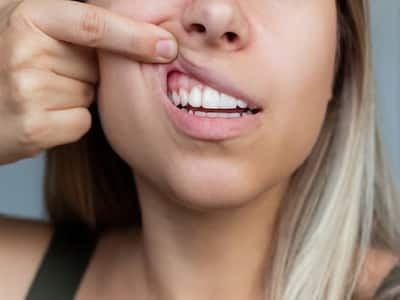
The changes in gum color can serve as early indicators of various health conditions. Watch out for these unusual changes in the color of your gums.
When it comes to maintaining good oral health, most of us focus on brushing our teeth, flossing, and visiting the dentist regularly. While these habits are indeed crucial, there is another aspect of oral health that often goes unnoticed, the color of our gums. But the color of your gums can provide valuable insight into your overall well-being. Yes, you heard it right.
Dr Jatin Kakrani, Co-founder, Dezy.com, says, “The changes in gum color should not be ignored, as they can serve as early indicators of various health conditions. If you notice any unusual changes in the color of your gums, it is always best to consult with your dentist or healthcare provider.”
Here’s what the color of your gums say about your health
Let’s take a closer look at what the color of your gums might be telling you. Dr Kakrani explains the connection between gum color and your health:
Healthy Pink Gums: Ideally, healthy gums should appear pink and firm. This indicates proper blood circulation and signifies good oral health. Pink gums are a sign that your teeth and gums are receiving adequate nutrition and oxygen.
Pale Gums: If your gums appear pale or lighter than usual, it might indicate anemia or a lack of healthy blood cells. Anemia can be caused by various factors, such as nutritional deficiencies (iron, vitamin B12, or folate), chronic diseases, or blood loss. If you notice persistent paleness in your gums, it’s essential to consult a healthcare professional for further evaluation.
Red or Inflamed Gums: Redness or inflammation in the gums is often a sign of gum disease, also known as gingivitis or periodontitis. Gum disease is caused by plaque and bacteria buildup, leading to infection and irritation. If your gums bleed easily while brushing or flossing, feel tender, or appear swollen, it’s crucial to seek dental care promptly. Untreated gum disease can lead to more severe oral health problems and even affect your overall health.
Dark Gums: If your gums appear darker than usual, it could be due to melanin pigmentation. Dark gums are relatively common among individuals with certain ethnic backgrounds and usually do not indicate any health concerns. However, sudden darkening of the gums might be a sign of an underlying medical condition, such as Addison’s disease or hormonal changes during pregnancy. If you have concerns about the color of your gums, it’s advisable to consult with a dental professional.
White Spots or Patches: The presence of white spots or patches on your gums might be a sign of leukoplakia, a condition that can occur due to irritants like tobacco use or poorly fitting dentures. While not always harmful, these patches can sometimes develop into oral cancer. If you notice persistent white spots or patches, it’s essential to have them examined by a dentist or oral healthcare professional.
Blue or Purple Gums: Blue or purple gums can be a symptom of cyanosis, characterized by a lack of oxygen in the blood. Cyanosis can be caused by various factors, including respiratory or circulatory problems. If your gums appear bluish or purple, it’s crucial to seek immediate medical attention as it may indicate a serious underlying health condition.
READ RELATED: Costco & Trader Joe's Refuse to Modernize—and It's Keeping You Shopping
Yellow Gums: Yellowing of the gums can be a sign of jaundice, a condition that occurs when there is an excessive amount of bilirubin in the blood. Jaundice is often associated with liver disease or conditions affecting the liver, such as hepatitis or cirrhosis. If your gums appear yellow, along with other symptoms like yellowing of the skin or eyes, it’s vital to consult a healthcare professional promptly.
Maintaining good oral hygiene is crucial for overall well-being
Dr Kakrani notes that regular dental check-ups and maintaining a good oral hygiene routine are key to preserving your oral health and overall well-being,
“It’s important to remember that while the color of your gums can provide valuable insights into your overall well-being, it should be considered as one piece of the puzzle. It’s always best to consult with healthcare professionals for an accurate diagnosis and appropriate treatment.”
“Maintaining good oral hygiene practices, such as brushing your teeth twice a day, flossing regularly, and scheduling regular dental check-ups, remains the cornerstone of oral health. By paying attention to the color and appearance of your gums, you can become more proactive in detecting potential health issues and seek timely medical or dental intervention,” he adds.
Your gums are not just a frame for your teeth; they are also a window into your overall well-being.
Total Wellness is now just a click away.
Follow us on
Don’t Miss Out on the Latest Updates.
Subscribe to Our Newsletter Today!
window.addEventListener(‘load’, (event) => {
$(‘#commentbtn’).on(“click”,function(){
(function(d, s, id) { var js, fjs = d.getElementsByTagName(s)[0]; if (d.getElementById(id)) return; js = d.createElement(s); js.id = id; js.src = “//connect.facebook.net/en_US/sdk.js#xfbml=1&version=v2.3”; fjs.parentNode.insertBefore(js, fjs);}(document, ‘script’, ‘facebook-jssdk’));
$(“.cmntbox”).toggle();
});
});










